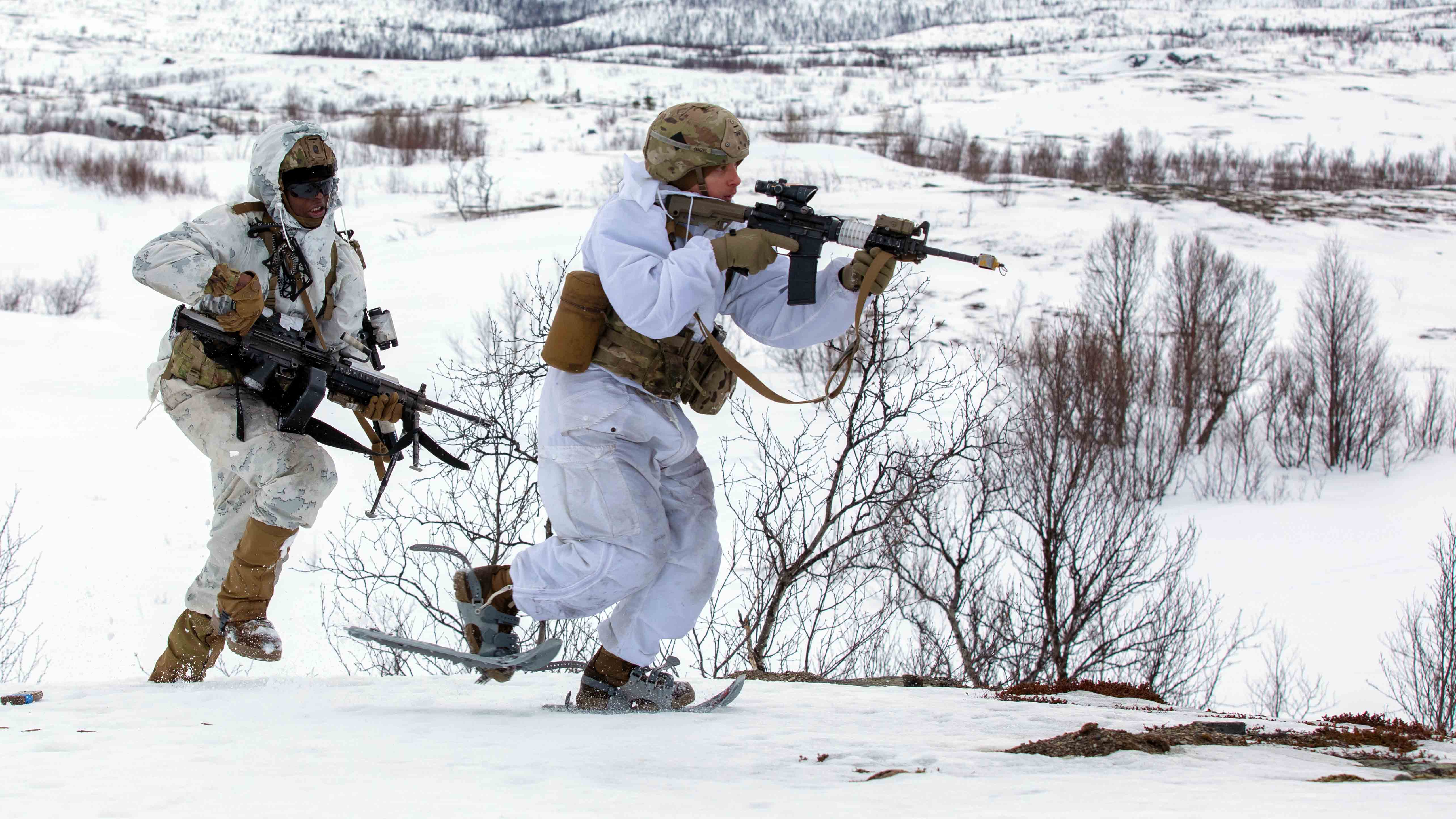Army Prepares 1st Arctic-Focused Doctrine in 50 Years
Army Prepares 1st Arctic-Focused Doctrine in 50 Years

For the first time in more than 50 years, the Army is developing Arctic-focused doctrine to help soldiers contend with and operate in the harsh but increasingly competitive region.
Army Techniques Publication (ATP) 3-90.96, Arctic and Extreme Cold Weather Operations, will give soldiers information “to overcome the Arctic environment and succeed in temperatures as cold as -40 degrees Fahrenheit,” according to the Mission Command Center of Excellence. It is slated to be released in mid-2024.
The Arctic is becoming an “increasingly active security environment” as Russia upgrades its “large-scale, credible Arctic military capabilities” and China grows its “economic and scientific activities in the region,” according to a recent report from the Rand Corp on the U.S. military’s Arctic capabilities.
The upcoming Army Techniques Publication is the culmination of over a year of Arctic and extreme cold weather operations research by the Combined Arms Doctrine Directorate. It takes into account training at the Northern Warfare Training Center in Alaska, historical records and consultations with other Arctic nations, including Canada, Norway, Finland, Sweden and Denmark. The directorate also worked closely with the 11th Airborne Division, which is stationed in Alaska, to develop the doctrine.
“Arctic and extreme cold weather operations are about more than being able to survive, you have to be able to thrive,” said Capt. Edward Garibay, the lead doctrine author. “As the Arctic warms from climate change, it’s going to become more and more accessible in the coming decades and take on new importance.”
The doctrine will have a tactical focus, and it will help soldiers adapt the concepts and experience they know for the Arctic and the subarctic.
“We have a lot of localized knowledge that isn’t easily shared across the Army,” Garibay said. “We have pockets of individuals and units that are experts, but their knowledge is only available in local [standard operating procedures] and only passed down from one command to the next. We’re consolidating all that knowledge in one place and providing a foundation for everyone to build on.”
Unique aspects of the region that may affect soldiers’ operations also will be incorporated into the doctrine. For example, solar storms in the Arctic can affect GPS capabilities, metals and plastics are more brittle and batteries do not last as long, according to the Mission Command Center of Excellence.
This winter, the doctrine will be put to the test during the 11th Airborne Division’s Joint Pacific Multinational Readiness Center rotation. The exercise, which will replicate large-scale combat conditions, will validate doctrine concepts and provide essential feedback to the Combined Arms Doctrine Directorate.
Maintaining Arctic dominance is essential to the Army’s readiness.
“The U.S. Army has to be ready to fight and win in extreme cold and mountainous environments in order to deter conflict, and the 11th Airborne Division is the foundation of that capability,” said Maj. Gen. Brian Eifler, the division commander. “To build sustained Arctic readiness, we need to [be] … sharing best practices and lessons learned.”

